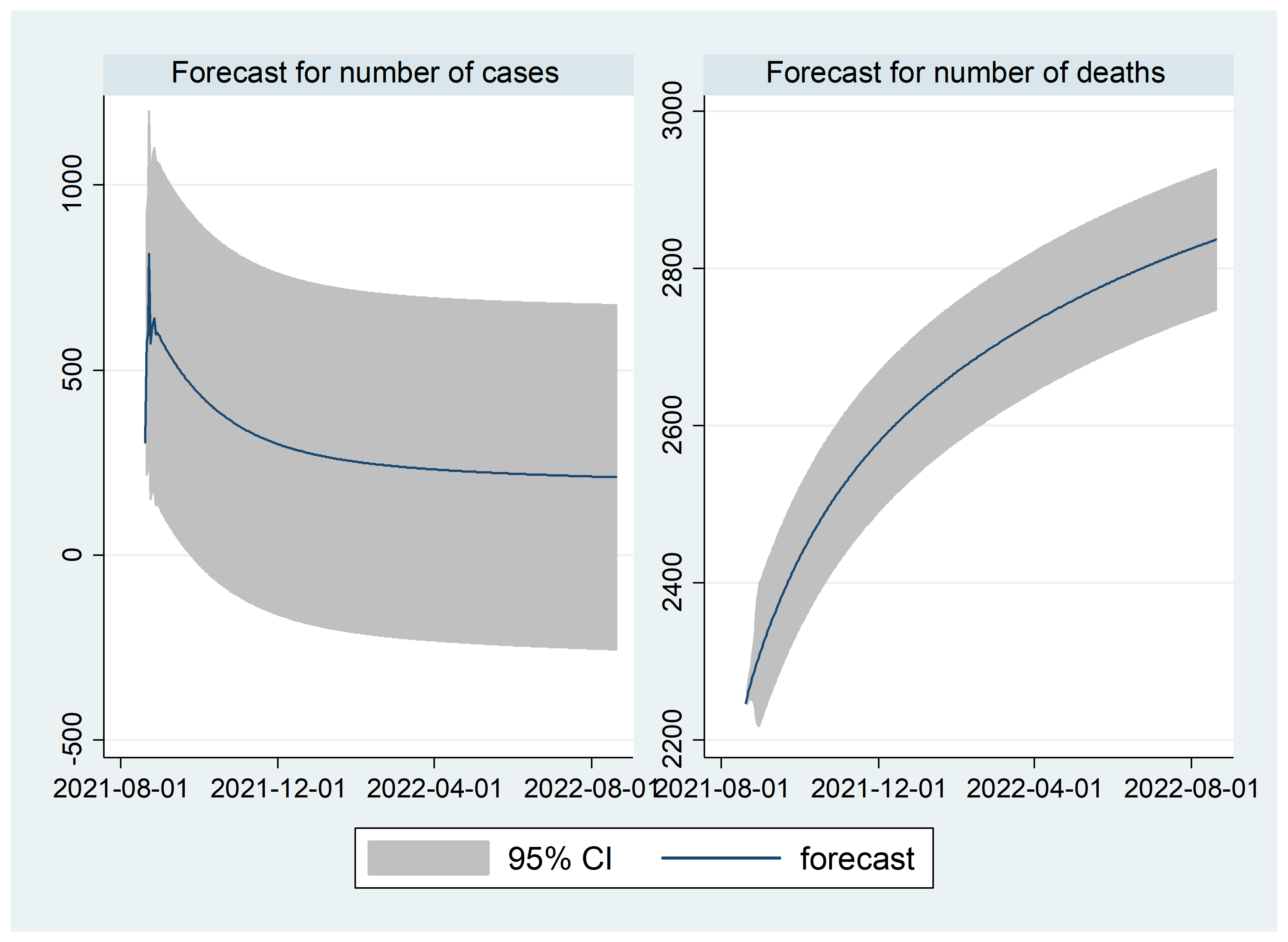Modeling and Forecasting the Third wave of Covid-19 Incidence Rate in Nigeria Using Vector Autoregressive Model Approach
Keywords:
Covid-19, Vector Autoregressive model, Akaike Information Criterion, Final Prediction Error, Hannan Quinn Information CriterionAbstract
Modeling the onset of a pandemic is important for forming inferences and putting measures in place. In this study, we used the Vector autoregressive model to model and forecast the number of confirmed covid-19 cases and deaths in Nigeria, taking into account the relationship that exists between both multivariate variables. Before using the Vector Autoregressive model, a co-integration test was performed. An autocorrelation test and a heteroscedasticity test were also performed, and it was discovered that there is no autocorrelation at lags 3 and 4, as well as no heteroscedasticity. According to the findings of the study, the number of covid-19 cases and deaths is on the rise. To forecast the number of cases and deaths, a Vector Autoregressive model with lag 4 was used. The projection likewise shows a steady increase in the number of deaths over time, but a minor drop in the number of confirmed Covid-19 cases.

Published
How to Cite
Issue
Section
Copyright (c) 2022 Journal of the Nigerian Society of Physical Sciences

This work is licensed under a Creative Commons Attribution 4.0 International License.
How to Cite
Most read articles by the same author(s)
- Olumide S. Adesina, Adedayo F. Adedotuun, Kayode S. Adekeye, Ogbu F. Imaga, Adeleke J. Adeyiga, Toluwalase J. Akingbade, On logistic regression versus support vectors machine using vaccination dataset , Journal of the Nigerian Society of Physical Sciences: Volume 6, Issue 1, February 2024







